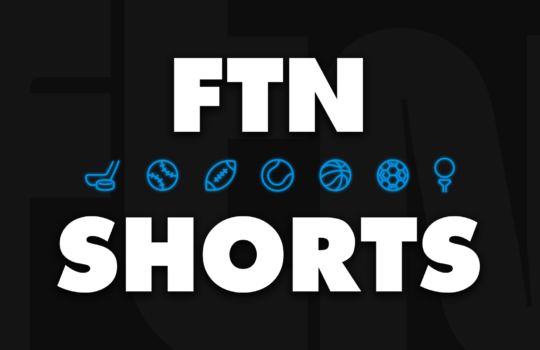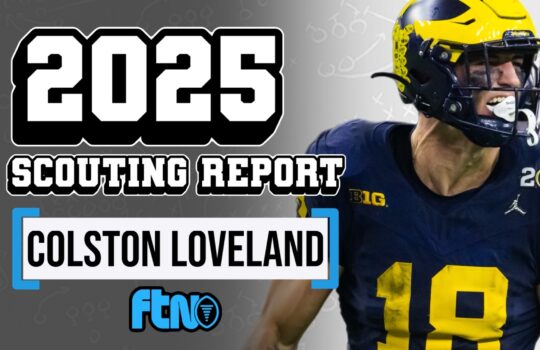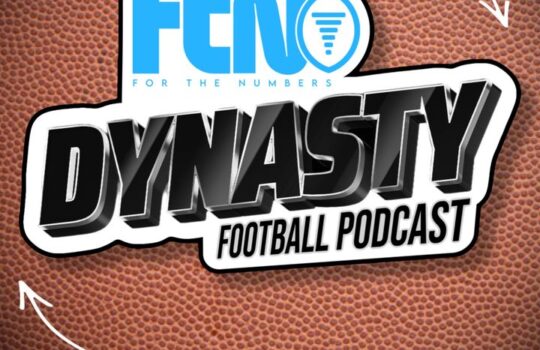
The best ownership projections create a massive advantage in NFL DFS. If you’ve ever thought to yourself “If I had known he’d be so popular, I never would have played him,” or the opposite, you already know this to be true.
At FTN, we have exactly that – not just the industry’s most accurate ownership, but ownership percentages that can help you make key decisions on specific players each and every week.
We got some things wrong in Week 13, like the Patriots being a more popular DST than Carolina, but we also got a ton right, including some aggressive stances that created real edges. At the end of the article, you can see mathematically how much more accurate we were than anyone else (across multiple contest types).
Ownership percentages in the graphics below are taken from the $50 Red Zone single entry tournament on DraftKings. This tournament is large enough to represent the entire field of DFS players, yet the single-entry aspect makes it more about the psychology of clicking on each individual player as opposed to what an optimizer spits out.
Nico Collins, Houston Texans
At this point, we should probably just play one of the Houston receivers every single time we have them projected for single-digit ownership when the industry believes otherwise. They keep crushing and earning spots in this article!
As we search for contrarian upside on a weekly basis, we’re looking for the guys projected under 10% who can truly break the slate. Our users were able to identify Nico Collins as one such candidate to do so, and he delivered at 6% ownership.
Curtis Samuel, Washington Commanders
Curtis Samuel’s steam had multiple components to it – not only was he far more popular than expected, but so was Sam Howell. Howell was projected at 9.0% in the industry. We had him at 13.9%, and he ended up 17.6%. Samuel turned out to be a great example of how a play can be worse in practice than he is in a vacuum.
As in, Howell + Samuel + Tyreek Hill did fine from a points-per-dollar standpoint, but they left you with only six roster spots to separate from the field (even if they all crushed).
The way I countered this steam was by playing Terry McLaurin. In hindsight, I think this was fine, but pivoting to a different stack was probably a better option.
Zack Moss, Indianapolis Colts
Everyone in the industry knew Zack Moss would be extremely popular. This wasn’t an instance of the industry being wrong, it’s just an example of the importance of having ownership projections for multiple contest types. For many, the math on the Moss chalk may have changed if they had known he’d be over 70% instead of 50%.
Accuracy Analysis
We can compare accuracy by looking at r-squared and RMSE. For those unfamiliar with these metrics, you can focus on just r-squared. If we were exactly right about every single player’s ownership, to the exact decimal place, our r-squared would be 100%. The closer to 100%, the better. The lower the RMSE, the better.
Shoutout to our friends at Establish The Run, as they continue to be in the top tier of projecting ownership with us. Perhaps the biggest takeaway is how much larger our advantage is in the single-entry contests than in MME (where it’s still significant). If you’re not a subscriber with us, and you’ve struggled to this point in the season, it’s possible you’re making sound decisions based on the ownership you’re looking at, and just need better information.
















































 New York Jets
New York Jets  New England Patriots
New England Patriots  Miami Dolphins
Miami Dolphins  Buffalo Bills
Buffalo Bills  Pittsburgh Steelers
Pittsburgh Steelers  Cleveland Browns
Cleveland Browns  Cincinnati Bengals
Cincinnati Bengals  Baltimore Ravens
Baltimore Ravens  Tennessee Titans
Tennessee Titans  Jacksonville Jaguars
Jacksonville Jaguars  Indianapolis Colts
Indianapolis Colts  Houston Texans
Houston Texans  Las Vegas Raiders
Las Vegas Raiders  Los Angeles Chargers
Los Angeles Chargers  Kansas City Chiefs
Kansas City Chiefs  Denver Broncos
Denver Broncos  Washington Commanders
Washington Commanders  Philadelphia Eagles
Philadelphia Eagles  New York Giants
New York Giants  Dallas Cowboys
Dallas Cowboys  Minnesota Vikings
Minnesota Vikings  Green Bay Packers
Green Bay Packers  Detroit Lions
Detroit Lions  Chicago Bears
Chicago Bears  Tampa Bay Buccaneers
Tampa Bay Buccaneers  New Orleans Saints
New Orleans Saints  Carolina Panthers
Carolina Panthers  Atlanta Falcons
Atlanta Falcons  San Francisco 49ers
San Francisco 49ers  Seattle Seahawks
Seattle Seahawks  Los Angeles Rams
Los Angeles Rams  Arizona Cardinals
Arizona Cardinals 










 Boston Celtics
Boston Celtics  Brooklyn Nets
Brooklyn Nets  Philadelphia 76ers
Philadelphia 76ers  New York Knicks
New York Knicks  Toronto Raptors
Toronto Raptors  Chicago Bulls
Chicago Bulls  Detroit Pistons
Detroit Pistons  Milwaukee Bucks
Milwaukee Bucks  Cleveland Cavaliers
Cleveland Cavaliers  Indiana Pacers
Indiana Pacers  Orlando Magic
Orlando Magic  Atlanta Hawks
Atlanta Hawks  Charlotte Hornets
Charlotte Hornets  Miami Heat
Miami Heat  Washington Wizards
Washington Wizards  Denver Nuggets
Denver Nuggets  Minnesota Timberwolves
Minnesota Timberwolves  Oklahoma City Thunder
Oklahoma City Thunder  Portland Trail Blazers
Portland Trail Blazers  Utah Jazz
Utah Jazz  LA Clippers
LA Clippers  Golden State Warriors
Golden State Warriors  Los Angeles Lakers
Los Angeles Lakers  Phoenix Suns
Phoenix Suns  Sacramento Kings
Sacramento Kings  Dallas Mavericks
Dallas Mavericks  Houston Rockets
Houston Rockets  Memphis Grizzlies
Memphis Grizzlies  New Orleans Pelicans
New Orleans Pelicans  San Antonio Spurs
San Antonio Spurs 









